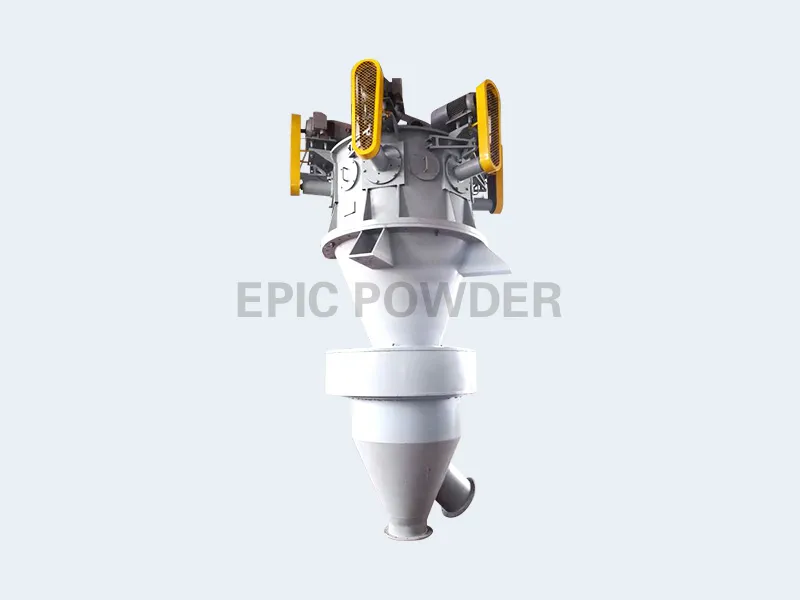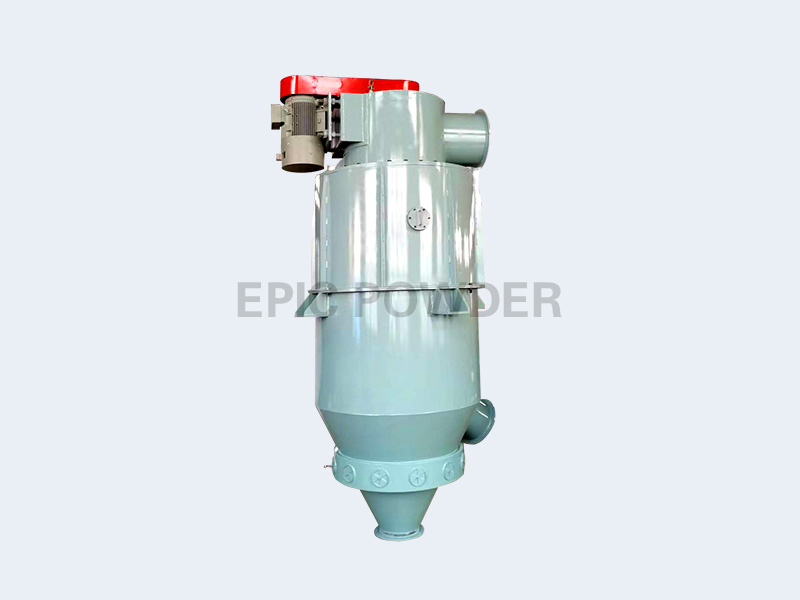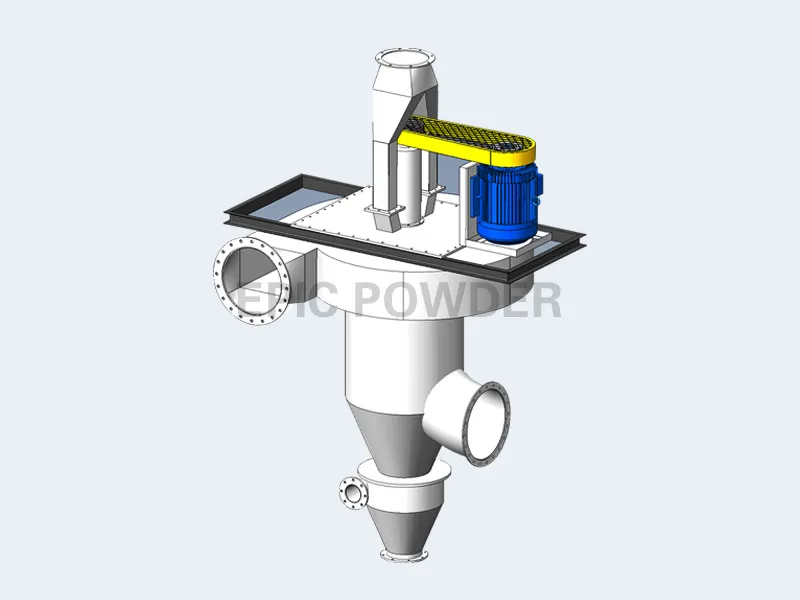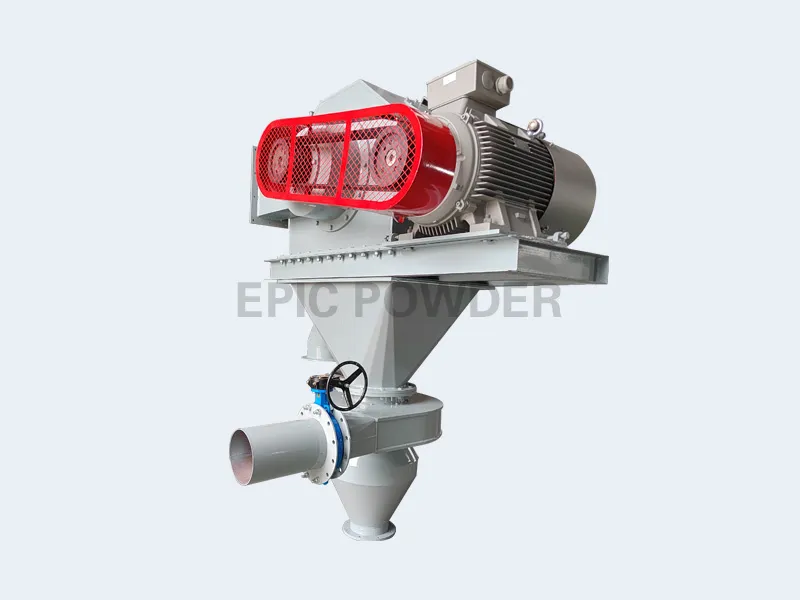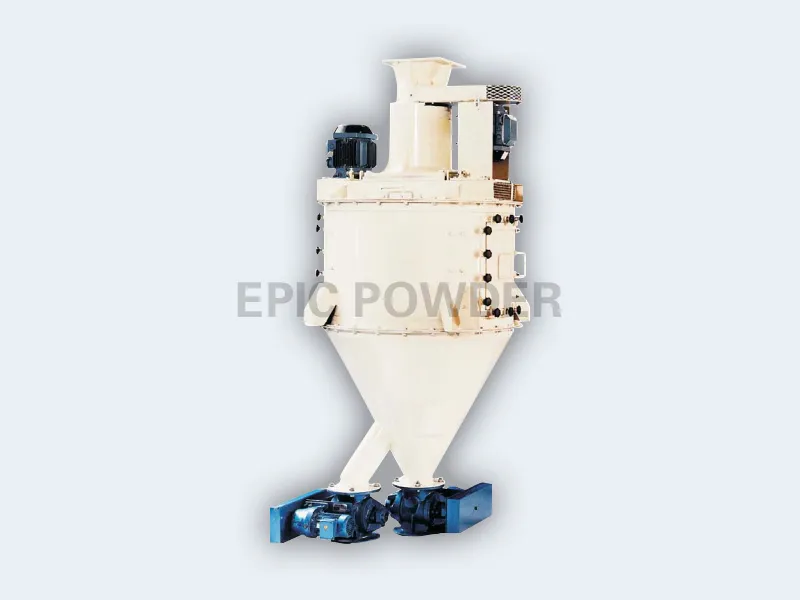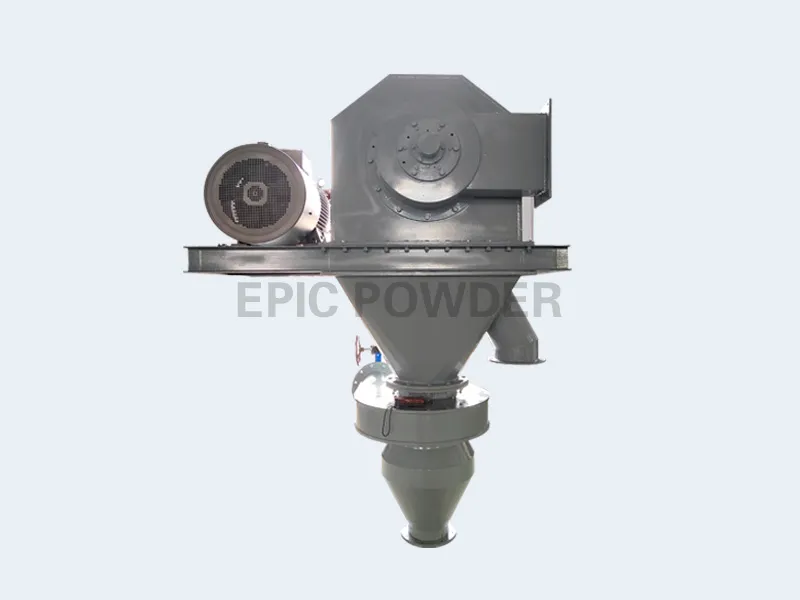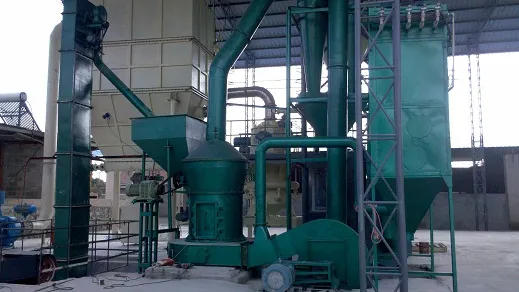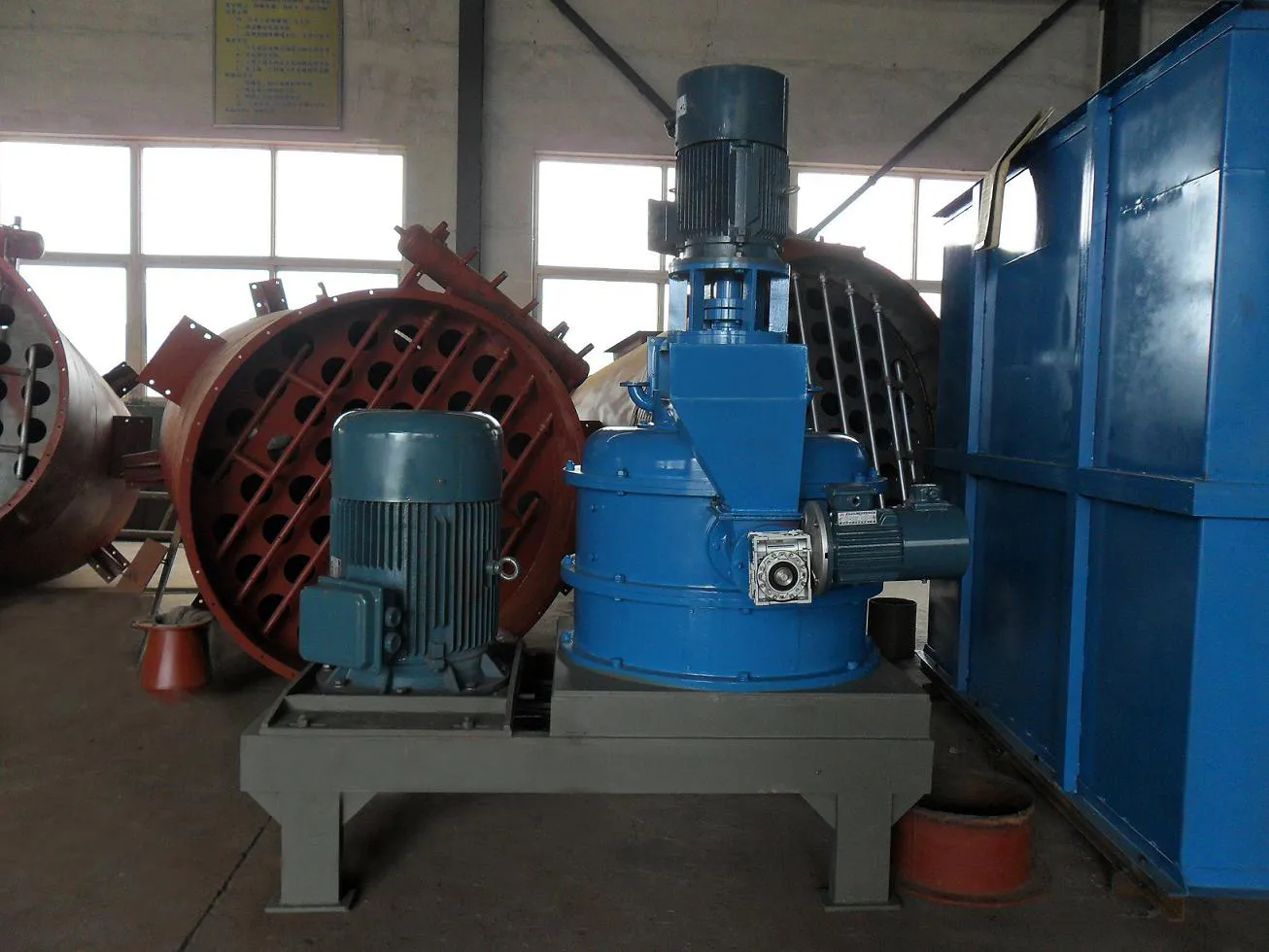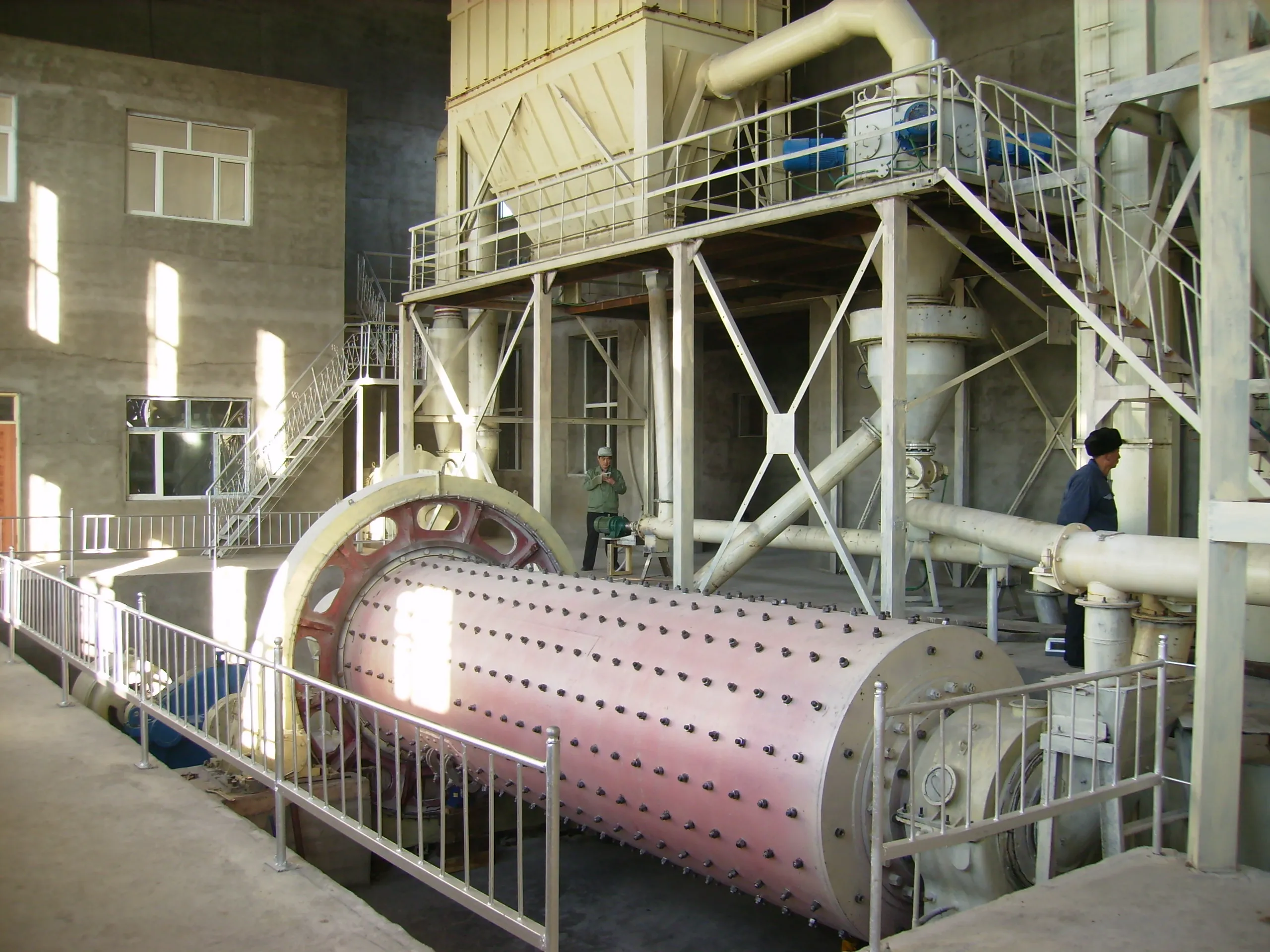Air Classifier
Air classifier is ideal for fine powders of ceramics, abrasives, glass, minerals, and polymers. If you’re unsure whether or not your particular feed will be a good fit, here are some material properties to consider.
Good candidates:
Dense materials
Hard materials
Round/spherical materials
Free-flowing materials
Materials that disperse well in air

Working Principle
Under the action of the fan, the material moves to the classification area at a high speed from the lower inlet of the classifier with the updraft. Under the action of the strong centrifugal force generated by the high-speed rotating classification turbine, the material is separated, and the fine particles meeting the particle size requirements enter the cyclone separator or dust collector through the blade gap of the classification wheel for collection. The velocity of some fine particles entrained by coarse particles disappears after hitting the wall, and then decreases to the secondary air outlet along the wall of the cylinder. Through the strong washing effect of the secondary air, the coarse and fine particles are separated, the fine particles rise to the secondary classification in the classification area, and the coarse particles drop to the discharge port for discharge.
Features And Benefits
Air Classifier is the process in which fine particles are separated by utilizing the opposing forces of centrifugal force and aerodynamic drag. An air classifier can precisely, predictably, and efficiently sort particles by mass, resulting in a coarse particle fraction and a fine particle fraction.
- A variety of classification rotor are available, and the output can be adjusted; speed of wheel is controlled by inverter, particle size can be adjusted freely. The classifying wheel can be made of ceramic materials, without metal pollution, meeting the requirements of high-purity materials.
- Grinding is in closed system, little dust, low noise in a clean and environmentally friendly process.
- In conjunction with ball mill, table roller mill and Raymond mill to form closed circulation.
- Optional explosion-proof design, can also be upgraded to a nitrogen circulation system to meet the processing needs of flammable and explosive oxide materials.
Related Products
Technical Parameters
Technical parameters of horizontal Multi rotor Air Classifier HTS
| MODEL | 200/4 | 315/3 | 315/4 | 315/6 | 400/6 | 500/3 | 500/4 | 500/6 | 630/6 |
|---|---|---|---|---|---|---|---|---|---|
| Particle size(D97:μm) | 3-120 | 3-150 | 3-150 | 3-150 | 4-150 | 5-150 | 5-150 | 5-150 | 6-150 |
| Classification efficiency(η) | 60~80% | 60~80% | 60~80% | 60~80% | 60~80% | 60~80% | 60~80% | 60~80% | 60~80% |
| Classifier motor(kw) | 5.5/7.5 x 4 | 15/18.5 x 3 | 15/18.5 x 4 | 15/18.5 x 6 | 18.5/22 x 6 | 22/30 x 3 | 22/30 x 4 | 22/30 x 6 | 30/45 x 6 |
| Air volume(m³/h) | 4800 | 10500 | 14000 | 21000 | 33600 | 26400 | 35200 | 52800 | 84000 |
Technical parameters of horizontal single rotor Air Classifier HTS
| MODEL | 70 | 100 | 140 | 200 | 260 | 315 | 400 | 500 | 630 | 750 | 1000 |
|---|---|---|---|---|---|---|---|---|---|---|---|
| Particle size(D97:μm) | 5-100 | 3-100 | 3-120 | 3-120 | 3-150 | 3-150 | 4-150 | 5-150 | 6-150 | 6-150 | 15-150 |
| Classification efficiency(η) | 60~80% | 60~80% | 60~80% | 60~80% | 60~80% | 60~80% | 60~80% | 60~80% | 60~80% | 60~80% | 60~80% |
| Classifier motor(kw) | 2.2 | 3 | 4 | 7.5 | 11 | 15/18.5 | 18.5/22 | 22/30 | 30/45 | 37/55 | 45/75 |
| Air volume(m³/h) | 150 | 300 | 600 | 1200 | 2000 | 3500 | 5600 | 8800 | 14000 | 20000 | 35000 |
Technical parameters of vertical single-rotor Air Classifier ITC
| MODEL | ITC-S2 | ITC-S1 | ITC-1 | ITC-2 | ITC-3 | ITC-4 | ITC-5 | ITC-6 | ITC-7 | ITC-8 | ITC-9 |
|---|---|---|---|---|---|---|---|---|---|---|---|
| Particle size(D97:μm) | 5-100 | 6~150 | 6~150 | 8~150 | 8~150 | 10~150 | 15-150 | 20-150 | 25-150 | 25-150 | 30-150 |
| Classification efficiency(η) | 60-90% | 60-90% | 60-90% | 60-90% | 60-90% | 60-90% | 60-90% | 60-90% | 60-90% | 60-90% | 60-90% |
| Classifier motor(kw) | 4 | 7.5 | 11 | 15 | 22 | 37 | 37-45 | 45 | 55 | 75 | 110 |
| Air volume(m³/h) | 1200 | 2700 | 3900 | 6000 | 11000 | 17000 | 30000 | 43000 | 77000 | 120000 | 150000 |
Project Cases
A Material Company: Zircon Sand Grinding Equipment
Production Line of Lithium Iron Phosphate for an Electric Vehicle Company in Huizhou
A New Material Company in Zhejiang: Metal powder grinding equipment
Silica soil drying and dispersing modification production line of a mineral products company in Jiangsu
Air Classifying production line of carbon microspheres in a chemical plant in Hubei
A ball milling and modification production line in a calcium carbonate factory in Iran
Latest News
GET IN TOUCH
Our experts will contact you within 6 hours to discuss your needs for machine and processes.
Factory Address:
NO. 369, Road S209, Huanxiu , Qingdao City, China

